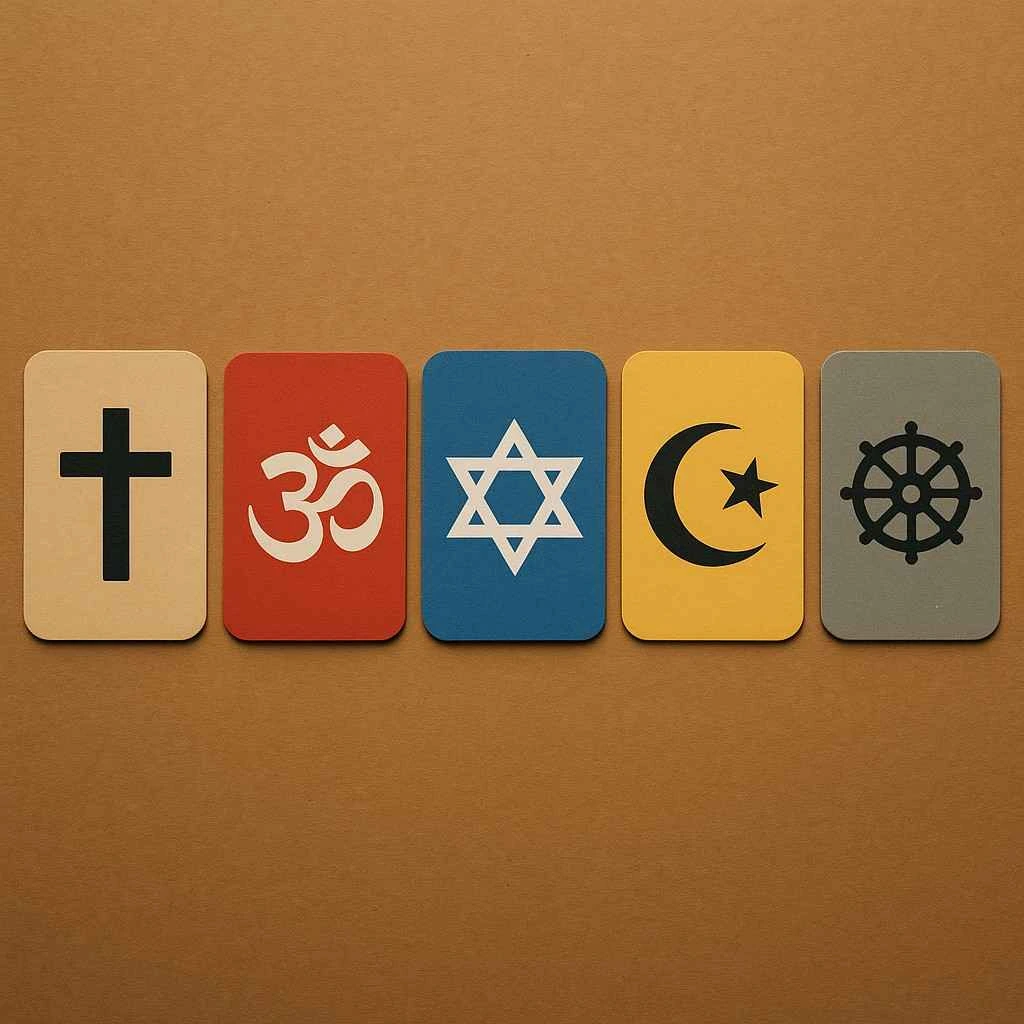Religious Symbols in Pop Culture — Respect or Appropriation?
In today’s globalized world, the boundary between sacred faith and mainstream entertainment is increasingly blurred. From celebrities wearing religious pendants to fashion brands using sacred imagery on clothes, religious symbols have found a visible place in popular culture. But this growing presence raises a critical question — is it a mark of respect and inclusivity, or an act of cultural and spiritual appropriation?
The Rise of Sacred Symbols in the Mainstream
Pop culture thrives on visual impact and emotional connection, and religious symbols — crosses, Om, crescent moons, mandalas, rosaries, turbans, and many more — carry deep emotional and historical meaning. Their use in music videos, films, and fashion helps creators instantly communicate depth, mystery, and identity. For instance, global stars like Madonna or Kanye West have long used Christian imagery in performances to provoke thought or enhance aesthetic appeal. Similarly, yoga-inspired brands often include Hindu symbols such as “Om” or “Namaste” to create an aura of peace and mindfulness.
In some cases, the use of religious symbols is genuinely intended to show respect or appreciation for the beauty and philosophy of a faith. Many artists claim they are celebrating universal spirituality rather than mocking religion. A growing number of young people also wear these symbols as statements of unity — suggesting that faith can transcend institutional boundaries.
The Line Between Appreciation and Appropriation
However, appreciation and appropriation are not the same. Appreciation involves understanding, respect, and consent from the community that holds the symbol sacred. Appropriation, on the other hand, often strips a sacred object of its deeper meaning and uses it merely as a fashion accessory or marketing tool.
For example, when a fashion label prints Hindu deities on footwear or swimwear, it’s not an act of admiration — it’s a commercial decision that disregards the faith’s emotional and cultural context. Similarly, when music videos feature crosses or hijabs purely for shock value or exotic appeal, it diminishes their sacred purpose. Such uses can offend believers who see their spiritual icons being commercialized or trivialized.
In recent years, social media has become a powerful platform for calling out such insensitivity. Hashtags like #MyFaithIsNotYourFashion or #RespectTheSacred have drawn attention to how easily devotion is turned into decoration. These online movements remind creators that symbols of belief are not aesthetic tools, but carriers of deep collective memory and reverence.
Pop Culture’s Responsibility
Artists, designers, and media producers have a moral responsibility to research and respect the origins of what they use. A religious symbol is not just art — it represents centuries of faith, struggle, and wisdom. Using it carelessly can perpetuate stereotypes or dilute the essence of a tradition.
For instance, Hollywood has often portrayed Buddhist monks or Hindu ascetics as mystical “others,” reducing their spiritual practices to cinematic clichés. Similarly, Christian and Islamic symbols are frequently shown in extreme or violent contexts, which reinforces bias and misunderstanding. Pop culture, which has immense power to influence minds, must therefore approach faith with sensitivity.
Bridging Understanding Through Creativity
Despite these challenges, pop culture also has the potential to become a bridge of interfaith understanding. When creators genuinely engage with spirituality, they can introduce audiences to the beauty of other faiths in a meaningful way. For example, films like Life of Pi or Eat Pray Love portrayed spiritual exploration without mocking or misusing sacred ideas. Such works show that creativity and reverence can coexist beautifully.
Collaborations between religious scholars and cultural creators can help strike this balance. When artists consult with communities, learn their history, and portray their traditions authentically, art becomes a form of respect rather than exploitation. Educational initiatives and ethical guidelines in the fashion and entertainment industries can also help prevent misuse of sacred imagery.
The Future of Faith in Popular Culture
As global media becomes more inclusive and diverse, it’s essential to redefine how we represent religion. Faith should be portrayed not as a costume or commodity, but as a living, breathing part of human identity. The future of pop culture lies in creative freedom guided by moral consciousness — where respect for all belief systems becomes the foundation of artistic expression.
Ultimately, the question is not whether religious symbols should appear in pop culture, but how they appear. When used with understanding and reverence, they can foster connection and curiosity. But when used carelessly, they risk turning sacred heritage into a spectacle.
In a world hungry for meaning, pop culture has the power to remind us of our shared spiritual roots — but only if it chooses respect over appropriation.
~Religion World Bureau









